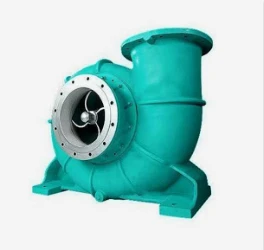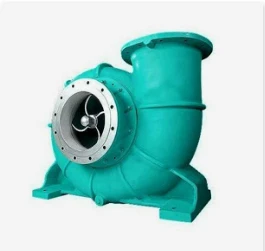Tagalog
- Afrikaans
- Albanian
- Amharic
- Arabic
- Armenian
- Azerbaijani
- Basque
- Belarusian
- Bengali
- Bosnian
- Bulgarian
- Catalan
- Cebuano
- Corsican
- Croatian
- Czech
- Danish
- Dutch
- English
- Esperanto
- Estonian
- Finnish
- French
- Frisian
- Galician
- Georgian
- German
- Greek
- Gujarati
- Haitian Creole
- hausa
- hawaiian
- Hebrew
- Hindi
- Miao
- Hungarian
- Icelandic
- igbo
- Indonesian
- irish
- Italian
- Japanese
- Javanese
- Kannada
- kazakh
- Khmer
- Rwandese
- Korean
- Kurdish
- Kyrgyz
- Lao
- Latin
- Latvian
- Lithuanian
- Luxembourgish
- Macedonian
- Malgashi
- Malay
- Malayalam
- Maltese
- Maori
- Marathi
- Mongolian
- Myanmar
- Nepali
- Norwegian
- Norwegian
- Occitan
- Pashto
- Persian
- Polish
- Portuguese
- Punjabi
- Romanian
- Russian
- Samoan
- Scottish Gaelic
- Serbian
- Sesotho
- Shona
- Sindhi
- Sinhala
- Slovak
- Slovenian
- Somali
- Spanish
- Sundanese
- Swahili
- Swedish
- Tagalog
- Tajik
- Tamil
- Tatar
- Telugu
- Thai
- Turkish
- Turkmen
- Ukrainian
- Urdu
- Uighur
- Uzbek
- Vietnamese
- Welsh
- Bantu
- Yiddish
- Yoruba
- Zulu
Telephone: +86 13120555503
Email: frank@cypump.com
Hul . 05, 2025 07:09 Back to list
High-Performance Slurry Sand Pump Anti Abrasive & Durable Sand Slurry Pump Solutions
- Introduction: Understanding Slurry Sand Pumps
- Technical Advantages of Anti Abrasive Sand Slurry Pumps
- Manufacturer Comparison: Performance and Specifications Analysis
- Tailored Solutions for Industry-specific Applications
- Use Case Studies: Real-World Implementations
- Maintenance and Operational Best Practices
- Conclusion: Why Slurry Sand Pump Remains Indispensable

(slurry sand pump)
Introduction: Understanding the Significance of Slurry Sand Pump
In modern industrial sectors such as mining, dredging, and construction, the management and movement of abrasive slurries are fundamental challenges. The slurry sand pump
is an engineered solution specifically designed to handle the harsh demands of solid-liquid mixtures where large particles and sharp granules can rapidly degrade inferior pumps. The continued expansion of infrastructure worldwide has fueled the global sand pump market, which was valued at nearly USD 750 million in 2022 and is expected to reach USD 1.05 billion by 2027, witnessing an estimated 6.8% CAGR (Source: MarketsandMarkets). Companies are increasingly adopting robust solutions to minimize downtime and improve overall site efficiency, making high-performance sand slurry pumps not just a preference but a necessity across multiple industrial landscapes.
Technical Advantages of Anti Abrasive Sand Slurry Pumps
One of the main differentiators in the performance of sand slurry pumps is their resistance to abrasion and their mechanical endurance under extreme working conditions. Anti abrasive sand slurry pumps deploy advanced wear-resistant materials, including high-chromium cast iron alloys, that substantially extend the lifecycle of key pump components such as impellers, liners, and casings. Laboratory testing demonstrates that a well-designed anti abrasive pump can last 3-5 times longer than standard cast iron models, significantly reducing the total cost of ownership. Key technical advancements include:
- Optimized flow hydraulics to minimize turbulent wear
- Replaceable wet ends for simplified maintenance
- Heavy-duty bearing assemblies capable of withstanding continuous shock loads
- Configurable sealing systems (expeller, gland packing, mechanical seal)
For engineers, this translates to fewer unplanned shutdowns and higher pumping efficiency, especially in operations involving highly abrasive slurry mixtures.
Manufacturer Comparison: Performance and Specifications Analysis
Selecting the right sand slurry pump involves evaluating manufacturers on parameters such as material innovations, hydraulic efficiency, after-sales support, and cost effectiveness. Below is a comparative table outlining leading brands and their flagship models in the slurry sand pump segment:
| Brand | Model | Wear Material | Max Capacity (m3/h) | Max Head (m) | Impeller Type | Estimated Maintenance Cycle (hrs) |
|---|---|---|---|---|---|---|
| Warman | AH Series | High-Chrome Alloy | 3,600 | 73 | Closed Vane | 4,000 |
| Schurco Slurry | S Series | ASTM A532 | 2,500 | 62 | Open Vane | 3,800 |
| Dragflow | EL Series | Hard Metal | 1,800 | 52 | Semi-Open | 3,200 |
| Hevvy/Toyo | DPH Series | Duplex Stainless | 2,200 | 60 | Open Vane | 3,600 |
| OEM Custom | SP-10 | Ceramic Alloy | 2,700 | 67 | Closed Vane | 4,500 |
The data shows that both material choice and internal configuration can lead to vast operational improvements. Brands like Warman and OEM Custom offer longer service intervals, ideal for high-abrasion applications.
Tailored Solutions for Industry-specific Applications
Every process, from dredging rivers to mining minerals, introduces unique operational challenges that demand application-specific solutions. Modern manufacturers have evolved to provide end-to-end customization, including adjustable impeller diameters, upgraded elastomer linings, and modular pump bases. For example, in fine sand recovery plants, customized sand slurry pump assemblies with variable-speed drives allow operators to optimize throughput for fluctuating feed conditions. In oil sands extraction, heavy-duty anti abrasive configurations support the high solids content typical of such demanding environments.
Advanced computational fluid dynamics (CFD) modeling now enables precise simulation of wear points, allowing design engineers to tailor pump internals for optimal longevity and particle passage, particularly in large-scale tailings transport and hydro-cycloning circuits. This level of precision not only minimizes unscheduled downtime but also aligns with sustainability goals by reducing energy usage per ton of solids moved.
Use Case Studies: Real-World Implementations
Real-world data affirms the benefits of investing in leading-edge slurry sand pump technology. In Australia’s Pilbara region, a leading iron ore mine upgraded its aging fleet of standard pumps to a modern anti abrasive setup. After one full operational cycle of 6,000 hours, unplanned maintenance dropped by 27% and pump replacement costs decreased by USD 150,000 annually.
In another instance, a Malaysian sand dredging operator implemented a customized high-head sand slurry pump system for riverbed excavation. Pump downtime shrank from an average of 6 days per month to just 1.5 days, directly increasing production by over 20%. Feedback from plant managers highlights lower vibration, enhanced seal life, and cleaner discharge as key reasons for switching to state-of-the-art pump solutions. These case studies underline not only the durability of specialized products but also their impact on operational profitability and safety.
Maintenance and Operational Best Practices
Reliable operation of sand slurry pumps depends on strict adherence to best practices in installation, routine monitoring, and predictive maintenance. Plant technicians are advised to follow a regular inspection and parts replacement schedule, employing vibration analysis and temperature monitoring for early detection of potential faulty components.
- Monitor wear patterns on impellers and volutes to anticipate replacement needs
- Maintain proper shaft alignment to prevent premature seal or bearing failure
- Utilize compatible lubricants for bearings exposed to water ingress or fine particles
- Implement remote condition monitoring systems in large-scale operations
OEMs often provide tailored maintenance kits and digital tracking tools to enhance lifecycle management. A robust after-sales support network further ensures seamless pump availability despite competitive field conditions.
Conclusion: Why Slurry Sand Pump Remains Indispensable
The evolution of the slurry sand pump has cemented its role as a critical component within industries managing abrasive slurries. Advances in material science, custom engineering, and predictive maintenance have made modern solutions more efficient and reliable than ever. As global operations grow in scale and complexity, investing in the right slurry sand pump architecture will remain a cornerstone for cost control, uptime, and environmental stewardship. The ongoing quest for performance at scale ensures that pump technology will continue to underpin the productivity of some of the most ambitious industrial projects worldwide.

(slurry sand pump)
FAQS on slurry sand pump
Q: What is a slurry sand pump?
A: A slurry sand pump is a heavy-duty pump designed to transport mixtures of sand, slurry, and water. It is commonly used in mining, dredging, and construction industries. Its durable build helps it handle abrasive materials efficiently.Q: What makes an anti abrasive sand slurry pump different?
A: An anti abrasive sand slurry pump is engineered with special materials to resist wear caused by abrasive sand particles. This extends the pump's service life and maintains its efficiency. It's ideal for handling harsh, slurry-laden environments.Q: Where are sand slurry pumps commonly used?
A: Sand slurry pumps are used in industries like mining, dredging, and construction. They efficiently move mixtures of sand, water, and other solids. Their robust construction makes them perfect for harsh working conditions.Q: How do I select the right slurry sand pump for my application?
A: Choose a slurry sand pump based on the required flow rate, head, and the abrasiveness of the slurry. Consider also the pump material and sealing mechanism for longevity. Consulting a specialist or manufacturer can help ensure the best fit.Q: What routine maintenance does a slurry sand pump need?
A: Regularly check for wear on wet parts, seals, and bearings in the slurry sand pump. Clean out blockages and ensure all lubrication points are serviced. Proper maintenance prevents breakdowns and extends pump lifespan.-
Durable Flue Gas Desulfurization Pump | Vertical Chemical Pump
NewsAug.19,2025
-
ISG Series Vertical Pipeline Pump - Chi Yuan Pumps | High Efficiency, Energy Saving
NewsAug.18,2025
-
pipeline pump-Chi Yuan Pumps Co., LTD.|High Efficiency,Low Noise
NewsAug.18,2025
-
ISG Series Vertical Pipeline Pump - Chi Yuan Pumps | High Efficiency, Low Noise
NewsAug.18,2025
-
ISG Series Vertical Pipeline Pump-Chi Yuan Pumps Co., LTD.|Energy Efficiency&Durability
NewsAug.18,2025
-
Large Wear-Resistant Slurry Pumps for Mining & Industrial Sludge
NewsAug.18,2025







